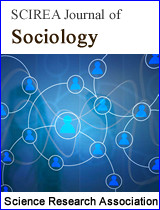THE ESSENCE OF AN IDEALIZED WAY OF TRANSLATION
DOI: 191 Downloads 13762 Views
Author(s)
Abstract
The author makes an attempt to consider the specifics of translation activity from the point of view of its idealized image, which allows us to correlate modern artistic interpretation with the philosophical practices of the past, using the Idea of the Good of the ancient Greek thinker Plato. An idealized image is a kind of horizon line that provides the specifics of research practice, which is determined by the epistemology of yesterday and today: from the ideal in search of the general to the single, in order to extract a unique, special. Such an algorithm can be used to find answers to the eternal question about the measure and quality criteria of translation activities.
Keywords
translation, interpretation, Idea, Plato, communicative intention.
Cite this paper
Marina Lukinova,
THE ESSENCE OF AN IDEALIZED WAY OF TRANSLATION
, SCIREA Journal of Sociology.
Volume 3, Issue 6, December 2019 | PP. 172-179.
References
| [ 1 ] | Abbot, N. Pre-Islamic Arab Queens, in AJSL58 (1941), No. 1pp1-22. |
| [ 2 ] | Arthur, G., The inscriptions of sargon II king of assyria, part 1., the annales, paris 1929. |
| [ 3 ] | Ephal, I., The ancient Arabs, nomands on the borders of fertile crescent 9-5 centuries B.C., Leiden 1982. |
| [ 4 ] | Macdonated ,M.S.A. North arabia in the first millennium BCE Civilizations of the Ancient Near East, NewYork 1995 P.P 1365-1369. |
| [ 5 ] | Retso,Jan, The Arabsin Antiquity their history from the assyrians to the umayyads, routledge curzon london and newyork -2003. |
| [ 6 ] | Tadmor, H, the inscriptions of tiglathpileser III king of assyria, jerusalem 1994. |

